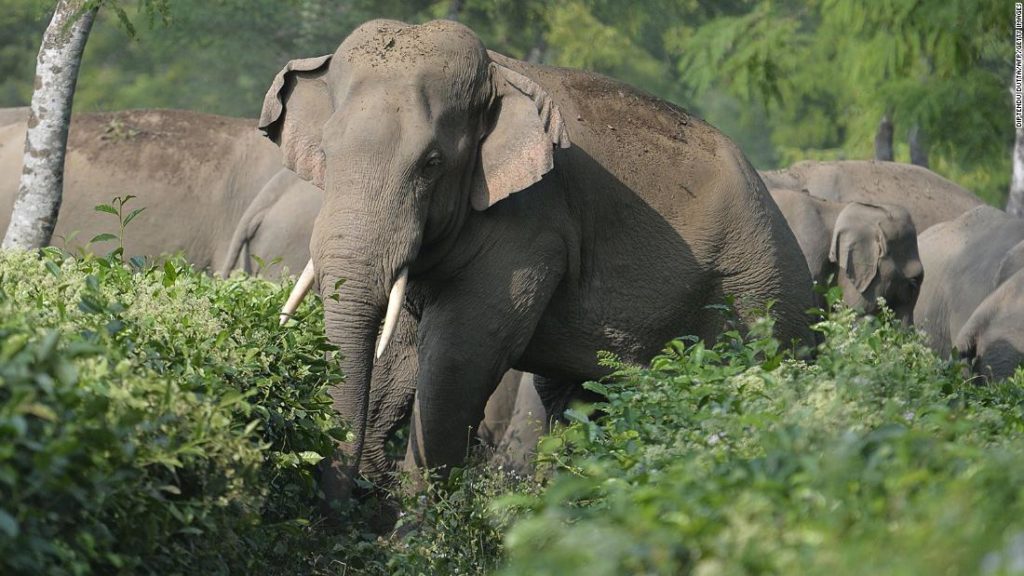“One of the biggest challenges in India is the fact that we have less than 5% of land set aside for wildlife, and there are millions of people who live adjacent to our protected areas or inside,” says Krithi Karanth, chief conservation scientist and executive director of the Centre for Wildlife Studies, headquartered in Bangalore, southern India.
Finding ways for people and elephants to co-exist peacefully will require a concerted effort from government, conservationists and the public to come together to solve this issue both in the short- and long-term, says Tiwari.
Finding effective solutions
Farmers sometimes use light and noise to scare elephants away, but these tactics can become less effective as the animals grow accustomed to them.
Planting crops that elephants don’t like to eat, such as chilis, lemons and ginger, digging trenches, and setting up alarm systems to warn people of nearby elephants can all help keep the animals away from agricultural land. Community groups can also be trained to guide elephants back towards the forest and away from crops.
Another approach is to help people in rural communities deal with the impact that elephants can have on their daily life. The Indian government offers compensation for families who have suffered losses from wild animals but receiving a payment can be a long and bureaucratic process, according to Karanth.
In the long-term, one of the most effective ways to reduce the conflict will be to restore and protect forest areas and the ancient migration “corridors” elephants travel through, says Tiwari. These strips of forest link elephants’ natural habitats, and preserving them means the animals have less reason to stray onto farmland.
In a country where elephants are seen as a sacred animal — the incarnation of the god Ganesh — by the majority Hindu population, both Tiwari and Karanth say tolerance for elephants encroaching on farmland is generally high. Karanth warns against complacency but is optimistic that the situation will improve.
“There is a deep religious, cultural affinity for this animal,” Karanth says. “I’m hopeful that people will do more for elephants because of this affinity.”
You may also like
-
Afghanistan: Civilian casualties hit record high amid US withdrawal, UN says
-
How Taiwan is trying to defend against a cyber ‘World War III’
-
Pandemic travel news this week: Quarantine escapes and airplane disguises
-
Why would anyone trust Brexit Britain again?
-
Black fungus: A second crisis is killing survivors of India’s worst Covid wave

